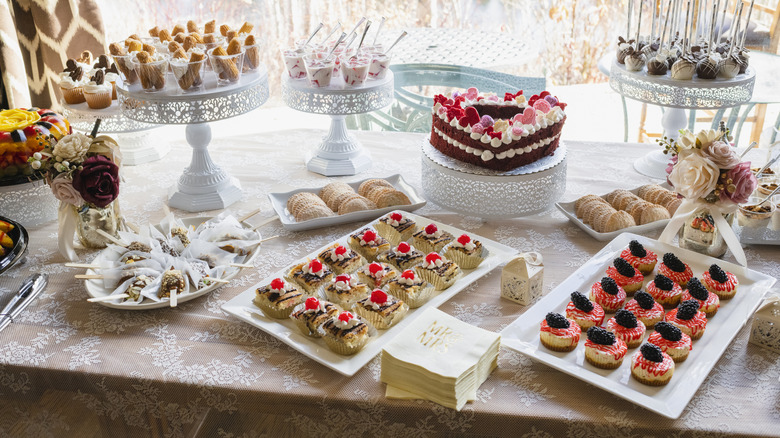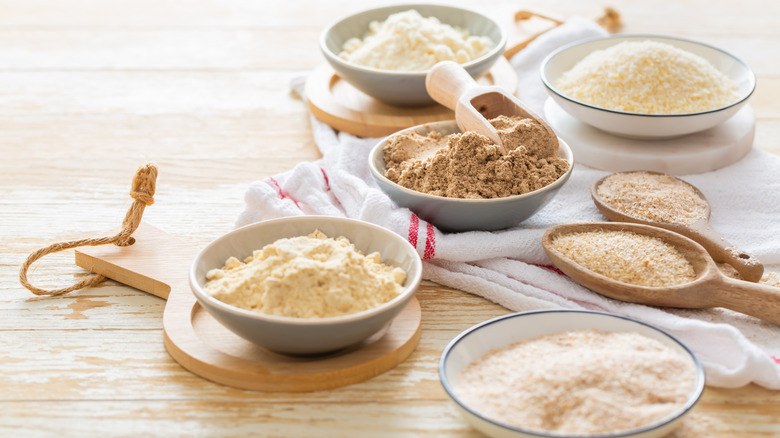The Actual Difference Between Cakes And Pastries
While the term "pastry" may seem as arbitrarily broad as "vegetable," the truth is that there are real distinctions separating pastries from cakes. Laura Kanya, research and development chef at Ann Clark, spoke with Food Republic to discuss these differences and how they affect the final product.
First, it has nothing to do with size, as Kanya assures us they can both be bite-sized. "A pastry is usually a denser baked good with higher flour content [versus] a cake that has a closer ratio of sugar to flour, equal or sugar is greater to flour," she says. "Typically, a cake is made with a lower-protein flour like cake flour to give a more tender crumb [versus] a pastry that has a higher protein content flour like all-purpose flour." This is why bread flour isn't ideal for cake; its protein content is too high. While it may be great for chewy sourdough, your cake may end up dense and even a bit tough.
You still don't want to use a heavy-protein flour for pastries, but whereas a cake needs a tender, delicate crumb for ideal texture, pastries typically need to hold a slightly firmer shape. Pastry flours are suitable for recipes like unfermented homemade pizza dough because their middling protein levels develop semi-firm gluten matrices on their own. Still, Kanya tells us that pastries often include an extra ingredient to help them stay soft and dainty.
The role of gluten and fat in cakes and pastries
The names, brands, and even origins of flours are not arbitrary. Even flour grown in the Southern versus Northern U.S. tastes different, all because of their protein (gluten) content. Observing that protein content — and controlling it with added fat — is a key requirement when baking.
"Most pastries like [an] éclair made from pâte à choux, a croissant or Danish made from ... laminated dough, pie or tart dough, or a scone, are made from a dough that has to [be] mixed and rolled," says Laura Kanya. "Fat is used in these doughs to cut the gluten strands to create a more tender product, [versus] cakes that use sugar and a lower-protein content flour." Fat coats gluten, preventing it from absorbing water and developing into a firm matrix. While this trick works well for pastries and adds rich flavor, cakes take it even further.
By starting with a low-protein flour, cakes don't need extra fat to limit gluten development. They get their decadent flavor from added sugar instead, which is why their dough is so much sweeter than a typical pastry's. Much like the difference between cake and yeast donuts, cakes have tiny, uniform air pockets that give them a tender crumb, whereas yeast donuts and pastries like éclairs have larger, less consistent pockets from more developed gluten matrices — and are a bit chewier.


